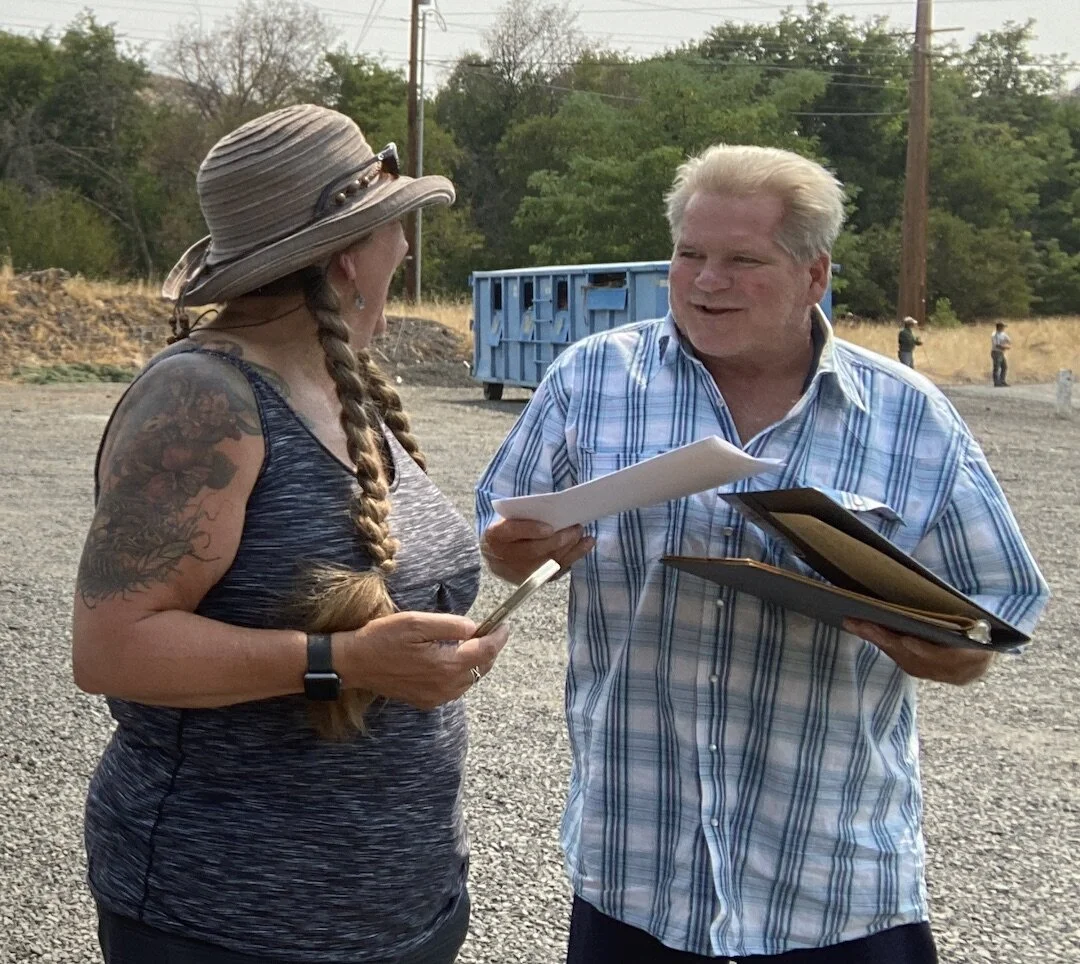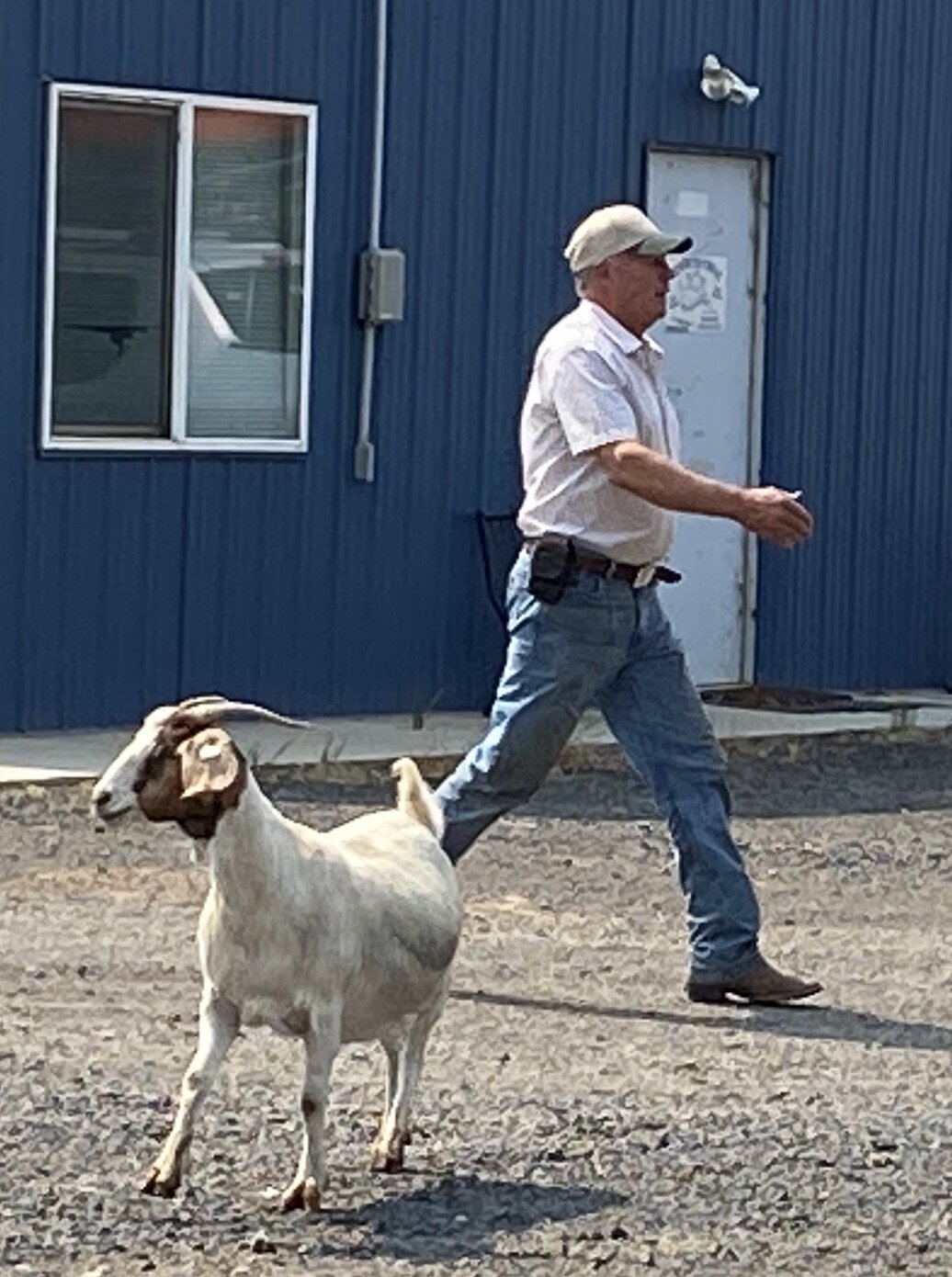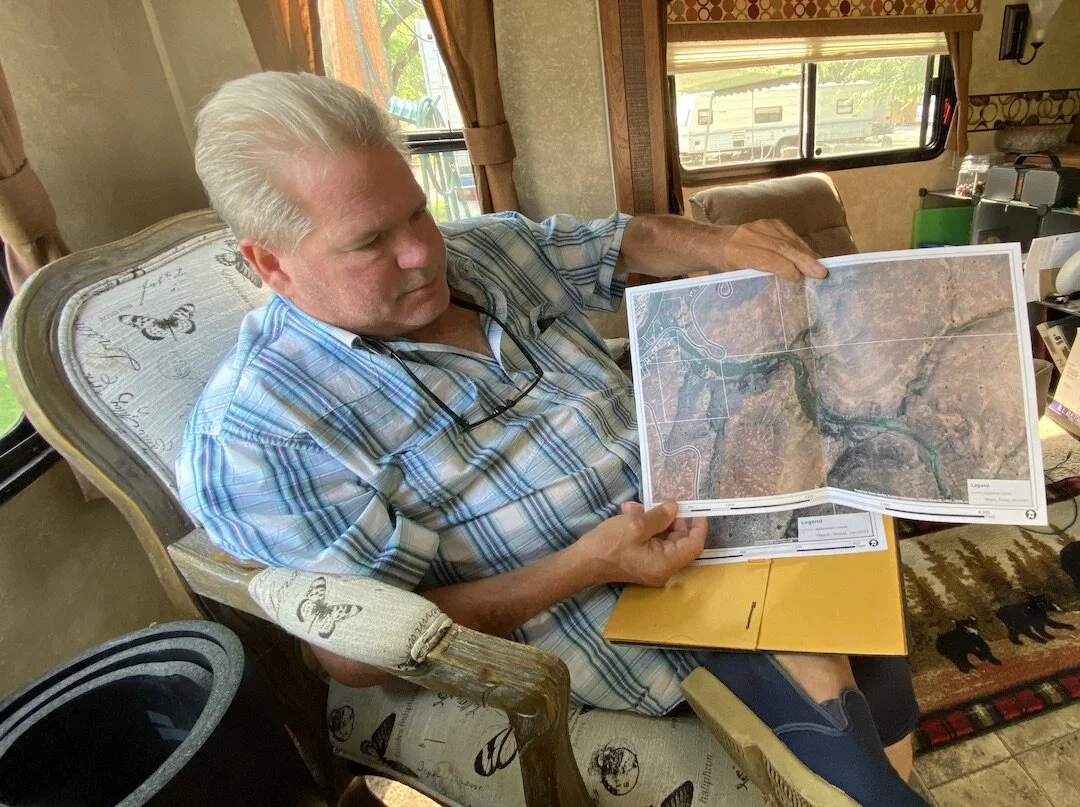600 Goats Munch Down in Maupin; Salmon Habitat Restoration Underway
““It’s like God created goats for this reason.””
Getting ready to grub, gnash and bash some yellow starthistle and Knapp weed, some 600 goats are gobbling along the banks of Bakeoven Creek in the first stage in restoring the salmon habitat.
These two didn’t take long to attack some Russian thistle along a berm of the creek. One plant is able to spread up to 100,000 seeds if left unchecked. Goats are winning this one.
By Tom Peterson
Six hundred head of goat are chewing up the Bakeoven Creek countryside in Maupin Oregon today.
And tomorrow. And the next.
I wouldn’t leave your socks unattended on that section of the creek. You're bound to lose ‘em.
With nimble tongues and leathery mouths, the Spanish-Bore cross goats are chomping down Knapp weed and crunching on blackberry thorns.
Is there anything tougher than a goat gut?
“It’s like God created goats for this reason,” said Randy Klettke, who had a little part in their arrival on Wednesday, Aug. 4th.
Randy Klettke talks with Tracy Buckner with Native Fish Society prior to goats being released on Aug. 4 at Bakeoven Creek
It’s kind of a long story, but one surely worth reading if you're into fishing, restoring streams, Peruvian goat herders, people working together or you like to fall asleep just counting goats jumping out of a trailer. See our video below.
You see, Klettke has for decades stirred his soul by tossing some feathers and a hook on a fly line.
The avocation and pursuit of steelhead led him to Maupin decades ago. He’s been a fishing guide, rowed bag boats and even built the Deschutes Canyon Fly Shop.
He built 17 vacation homes for anglers like himself.
He was a contractor by trade before retirement.
In his years fishing, he has been watching Bakeoven Creek where it empties into the Deschutes near City Park in Maupin.
It was once covered in cattle, prior to them being fenced out. Back then they would stand in the creek - not so good, but they also kept the vegetation down which kept the water table higher - which is great for salmon needing enough water to swim up the creek to reach their native spawning grounds.
Bakeoven Creek is one of five tributaries to the Deschutes and is an important spot for native fish to cast their spawn.
Today, the mouth and its first two miles are overgrown with blackberries. Blackberries are thirsty like well-run dogs. They drink a lot, stealing precious water from salmon hoping to swim upstream.
Klettke, who recently moved next door to the creek, aimed to do something about it.
He started thinking… thinking goats.
Within a short time frame, he was introduced to Tom Derry of the Native Fish Society that aims to support wild runs of fish, free-flowing rivers and the communities they run through. Soon the Deschutes River Alliance was also on board as the group pushes toward similar goals - improved water quality, ecosystems and robust fish populations.
Klettke told Derry about the issue with weeds.
“I’m thinking goats,” Derry told him.
Klettke also talked with the property owners along the creek, Wayne Stout, Tom Troutman, US Bureau of Land Management, Oregon Department of Fish & Wildlife and Randy Warnock. Between them, they had more than the first two miles of the creek covered.
“I thought Wayne wouldn’t like the idea,” Klettke said.
The first time they talked of the weeds, Stout said, “We should use goats.”
Turns out, goats were the odds on favorite and won out.
Why?
No herbicides - chemicals that can kill invasive weeds such as yellow starthistle and Knapp weed are expensive and bad for fish.
Goats on the other hand are able to knock them back and open areas for humans, allowing for additional phases of restoration such as pulling weeds by hand and replanting native plants.
Unlike cattle, goats are capable of eating and digesting Knapp weed and woody underbrush. They move around a lot, scattering small scat in pellets.
Klettke’s conversation soon turned into a plan and being a contractor he took charge of rounding up the herd.
The Goat King
Ray Holes hard at it. He brought this heard in from Pendleton where they enjoyed munching along the banks of the Umatilla River.
Klettke helped cut a deal with Roy Holes, the reputed Goat King and owner of Prescriptive Livestock Services. Holes, who hangs his hat in Grangeville, Idaho, was wrangling 8,000 goats at his peak. He got onto the idea about 20 years ago when he was working on a ranch and came to the conclusion that goats were cheaper and better than chemicals in fighting weeds in pasture land. He started looking into it and then heard a radio story from Paul Harvey about their benefits.
It turned into a business for Holes.
On Wednesday, Aug. 4, Holes showed up with two trucks hauling 600 goats close behind him.
ACES
He also had a couple of aces in the hole.
Eleuterio Bruno-Quinones and Jose Vargas Rimac, two Peruvian goat herders and H2 agricultural visa holders and their 8 dogs were ready.
Eleuterio hales from Huancayo and Jose from Cerro de Pasco. That’s 5,000 miles from here. They herd the sheep for Holes, night and day, using herd and guard dogs.
“Mucho caliente,” Jose said, while waiting for the goats to arrive. It was in the 90s and humid.
Soon Holes and his crew were releasing the sheep by the dozens near the mouth of Bakeoven Creek. They trotted their way creekside and within minutes were grubbing on Knapp weed, blackberry, locust anything within neck’s reach.
After a month of grazing the creek, it will definitely be trampled and rough, but it will also be set for a reemergence next Spring when native plants can be added.
Randy Klettke shows a map of Bakeoven Creek and its first two miles where efforts will be concentrated to restore habitat for salmon.
The goats are being paid for with a Native Fish Society grant, Klettke said. Cost for 30 days, $20,500. Cost to landowners, $0.00.
Holes said the timing was good, noting the weeds were still growing and they would be damaged more by grazing now, especially the star thistle. Left unto itself, the prickly plant is competitive and lends itself to thick impenetrable stands that lower plants diversity - that’s no good in a healthy ecosystem.
Klettke is also waiting to hear on a grant proposal he submitted to the Wasco County Soil & Water Conservation District. He is asking for $7,500 for removing additional brush and then replanting native species near the creek.
“I just decided I had to give something back,” Klettke said. “This river has given me so much… years of enjoyment, a living, a home.”






